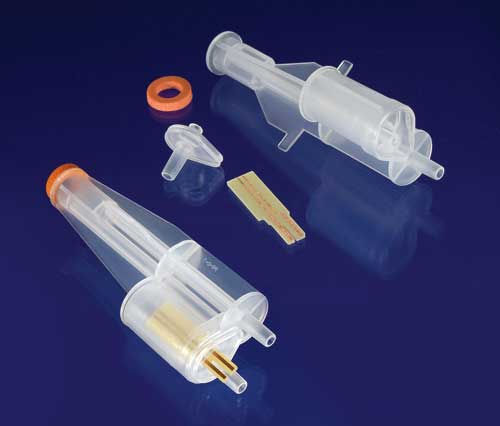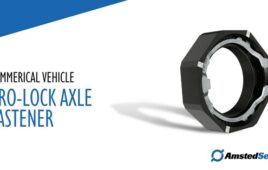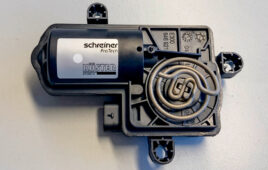Designing and molding complex sealing assemblies for intelligent electronic devices is a core expertise of Minnesota Rubber and Plastics. Typical of this expertise is a test collection cell assembly that the company redesigned and manufactured for use in a printed circuit board (PCB) contamination tester.
The PCB testers check areas of circuitry as small as 0.1 in2 that are most sensitive and prone to performance issues. A key assembly in the contamination tester is the test cell assembly that extracts 2.5 mL samples on the circuitry surface and enters it into the contamination tester. The sample is evaluated and feedback is provided on potential detrimental effects of any residue. These test cell collectors are single use devices designed to insert easily into the contamination tester. Each cell must perform consistently at a required high quality level.
By improving the test cell design over the previous supplier’s design, Minnesota Rubber and Plastics made a fifty percent vacuum improvement in the device so that it tested consistently at 24 In. Hg.

Test Collection Cell from Minnesota Rubber and Plastics has a 50 percent vacuum seal improvement over a previous supplier’s design. For maximum cleanliness, medical grade polypropylene is used for molding the two components that snap together and seal the device. An electrode fits into two slots in the cell body, which aligns and holds it into position. An end seal is affixed to the bottom flange of the cell body.
Minnesota Rubber and Plastics provided a complete evaluation of the original test cell design, material, mold design and process, final assembly, testing and packaging. Several problems were found that included cooling path deficiencies in the component molds. The shortcomings compromised the needed aligned internal cell pathways and snap-fit design.
To achieve the vacuum improvement and testing consistency, Minnesota Rubber and Plastics did the following: (1) changed the base material to higher quality polypropylene, (2) improved cooling lines in the mold, (3) refined molded part dimensions to increase component stability, and (4) designed a new machine molding cycle to achieve desired moldability and component cooling.
To enhance cleanliness of the cell’s internal components prior to assembly, Minnesota Rubber and Plastics used a recirculating and filtering tank cleaning system along with a parts drying oven on all components. Following cleaning, drying, assembly and inspection, the test cells are packaged in trays of 25 cells with 4 trays bagged and boxed with outer barcode labels to ensure material lot and part traceability. Production is set up to handle all volume requirements on a just-in-time basis.
Minnesota Rubber and Plastics
www.mnrubber.com





Tell Us What You Think!